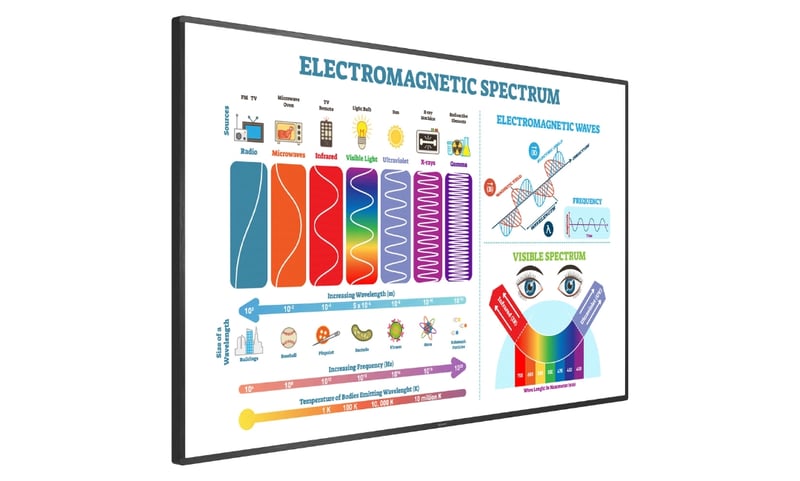Smartboards
Resource Page
QUICK PAGE LINKS
What is a smartboard?
Smartboard Features
Smartboard Benefits and Advantages
Where can smartboards be used?
What can I do on a smartboard?
Collaboration and Team Work on Smartboards
Smartboard Uses in a Conference Room
Smartboard in the Classroom
Smartboard Templates and Ideas
Sharp Aquos Board
Pulse Locations
What is a smartboard?
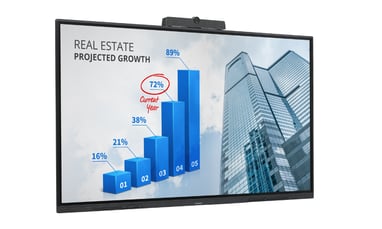
A smartboard, also known as an interactive whiteboard or interactive smartboard, is a device that combines a whiteboard with a touch-sensitive display, allowing users to interact with digital content using touch and stylus input.
Smartboard Features
Some common features of smartboards include touch and stylus input, handwriting recognition, multimedia integration, on-board storage, wireless connectivity, and the ability to save and share content. Some smartboards also offer collaboration tools, video conferencing capabilities, and integration with other classroom or office technologies.
Smartboard Benefits and Advantages
There are several benefits and advantages to having a smartboard, including:
- Interactive learning: Smartboards allow teachers to create more interactive and engaging lessons by incorporating multimedia content, games, and quizzes.
- Improved collaboration: Smartboards can encourage collaboration and group work, as students and employees can work together on projects and activities using the board's interactive features.
- Increased accessibility: Smartboards can be used to accommodate diverse learning styles and needs, as participants can interact with content using touch or a stylus, and can easily access digital resources.
- Efficient note-taking: Smartboards allow presenters to quickly and easily create and save notes, which can be easily accessed and shared with others.
- Enhanced engagement: Smartboards can increase student engagement and motivation by incorporating interactive and visually engaging content into lessons.
- Cost-effective: While the upfront cost of a smartboard may be higher than a traditional whiteboard, it can ultimately be more cost-effective over time by reducing the need for printing materials and creating more efficient workflows.
Overall, smartboards can enhance the learning experience for both students and teachers by providing a more interactive and engaging way to access and present content.
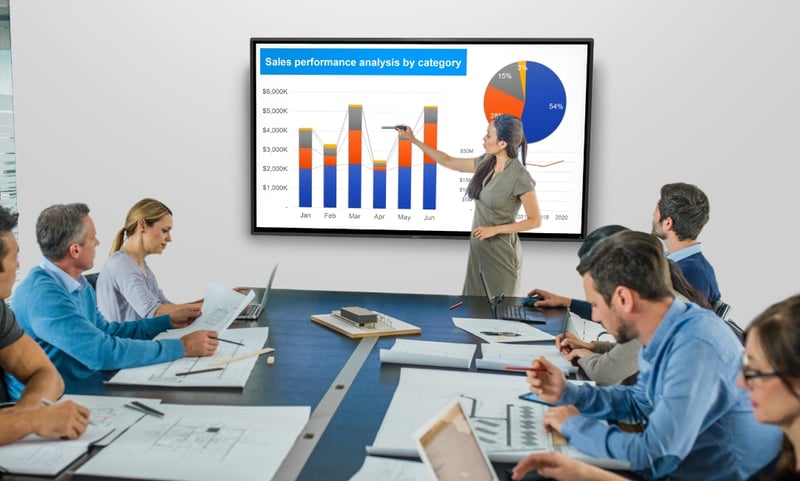
Where can smartboards be used?
Smartboards can be used in a variety of settings, including:
- Education: Smartboards are commonly used in classrooms and educational settings to enhance the learning experience and engage students.
- Business: Smartboards can be used in conference rooms, boardrooms, and other business settings to facilitate collaboration and improve presentations.
- Healthcare: Smartboards can be used in healthcare settings, such as hospitals and clinics, to display medical images and facilitate communication between healthcare professionals and patients.
- Entertainment: Smartboards can be used in entertainment settings, such as theaters and theme parks, to display information, advertisements, and interactive content.
- Public spaces: Smartboards can be used in public spaces, such as museums and libraries, to provide information and enhance the visitor experience.
Overall, smartboards can be used in any setting where interactive and engaging digital content is desired, and where collaboration and communication can be improved through the use of digital technology.
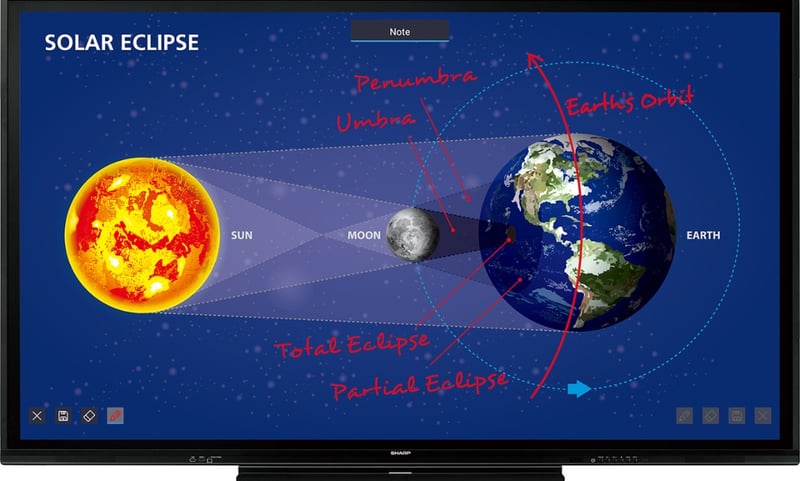
What can I do on a smartboard?
Smartboards offer a variety of features and capabilities that allow users to interact with digital content in many ways. Here are some examples of what you can do on a smartboard:
- Write and draw: You can use the smartboard's touch and stylus input to write and draw on the board, allowing you to create notes, diagrams, and sketches.
- Display multimedia content: Smartboards allow you to display and interact with multimedia content, such as images, videos, and audio files.
- Access the internet: Smartboards can be connected to the internet, allowing you to browse websites, access online resources, and search for information.
- Collaborate: Smartboards allow for real-time collaboration with other users, whether they are in the same room or located remotely.
- Presentations: Smartboards can be used to create and deliver engaging presentations, incorporating multimedia content, interactive features, and real-time audience feedback.
- Games and quizzes: Smartboards can be used to create and play educational games and quizzes, making learning more interactive and engaging.
Overall, smartboards offer a wide range of possibilities for interacting with digital content and creating engaging, interactive learning experiences.
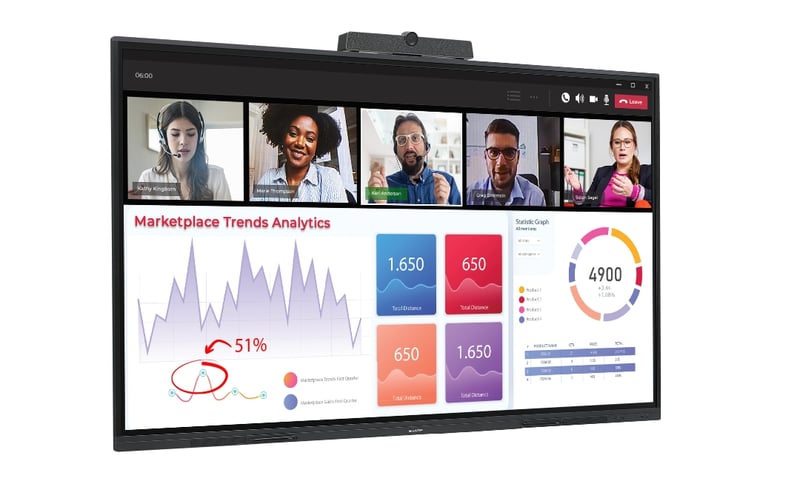
Collaboration and Team Work on Smartboards
Smartboards are designed to facilitate collaboration and teamwork, and offer several features that make it easy for multiple users to work together on the same project or task. Here are some examples of how smartboards can be used for collaboration and teamwork:
- Multi-user support: Smartboards can support multiple users simultaneously, allowing for real-time collaboration and teamwork.
- Screen sharing: Smartboards allow users to share their screens with other users, making it easy to collaborate on documents, presentations, and other digital content.
- Remote collaboration: Smartboards can be used for remote collaboration, allowing users in different locations to work together in real-time.
- Annotation and markup: Smartboards allow users to annotate and markup digital content, making it easy to collaborate on documents, diagrams, and other visual materials.
- Voting and polling: Smartboards can be used for voting and polling, allowing teams to make decisions and gather feedback in real-time.
- Interactive whiteboarding: Smartboards offer interactive whiteboarding features, making it easy for teams to brainstorm ideas and collaborate on creative projects.
Overall, smartboards offer many features that can enhance collaboration and teamwork, and can be a valuable tool for any team or organization looking to work together more effectively.

Smartboard Uses in a Conference Room
Smartboards are becoming increasingly popular in conference rooms due to their ability to enhance collaboration, productivity, and engagement. Here are some ways in which smartboards can be used in a conference room setting:
- Presentations: Smartboards are an ideal tool for delivering engaging and interactive presentations, allowing presenters to display and annotate content, as well as take audience feedback in real-time. Learn how to make impactful presentations
- Video conferencing: Smartboards can be used for video conferencing, allowing remote participants to collaborate and interact with other participants in the same room.
- Whiteboarding: Smartboards offer interactive whiteboarding features, allowing teams to brainstorm and collaborate on ideas in real-time.
- Data visualization: Smartboards can be used to display and visualize data, making it easy for teams to analyze and discuss complex information.
- Document collaboration: Smartboards can be used for real-time document collaboration, allowing multiple users to work on the same document simultaneously.
- Team building activities: Smartboards can be used for team building activities, such as interactive games and quizzes, making meetings and conferences more engaging and fun.
➡️ Download our Smartboards for Education Brochure
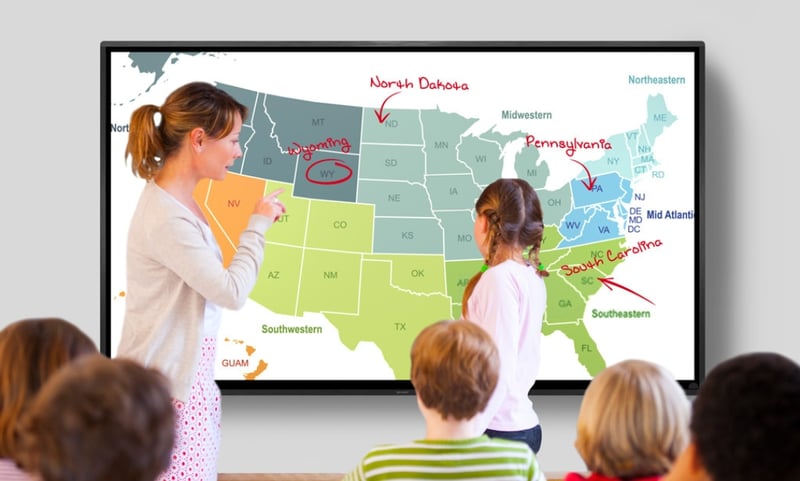
Smartboard in the Classroom
Smartboards have become increasingly popular in classrooms, as they offer many features and benefits that can enhance the learning experience for students. Here are some ways in which smartboards can be used in the classroom:
- Interactive lessons: Smartboards offer interactive lesson plans, making it easy for teachers to create engaging and interactive learning experiences for students.
- Collaborative learning: Smartboards allow for collaborative learning, allowing students to work together on projects and assignments in real-time.
- Digital textbooks: Smartboards can be used to display digital textbooks, making it easy for students to follow along with lessons and access additional resources.
- Multi-media presentations: Smartboards allow for multi-media presentations, allowing teachers to incorporate videos, images, and other multimedia content into their lessons.
- Digital whiteboarding: Smartboards offer digital whiteboarding features, allowing students to brainstorm ideas and work through problems in real-time.
- Interactive quizzes and games: Smartboards can be used for interactive quizzes and games, making lessons more engaging and fun for students.
➡️ Download our Smartboards for Education Brochure
Smartboard Templates and Ideas
Smartboards offer a variety of templates and ideas that teachers and presenters can use to create engaging and interactive presentations. Here are some ideas and templates you can use:
- Mind maps: Use the smartboard's digital whiteboarding features to create mind maps that help students organize their thoughts and ideas.
- Jeopardy game: Create an interactive Jeopardy game using a pre-made template, allowing students to test their knowledge of a specific topic.
- Timeline: Use a timeline template to display historical events or to illustrate the progression of a project or idea.
- Venn diagram: Use a pre-made Venn diagram template to compare and contrast different ideas or concepts.
- Quiz template: Use a quiz template to create interactive quizzes that test students' knowledge of a particular subject.
- Virtual field trip: Use the smartboard to take students on a virtual field trip to a different location, providing a fun and engaging learning experience.
Overall, smartboard templates and ideas can help teachers and presenters create engaging and interactive presentations that keep their audience engaged and interested. By using pre-made templates or creating their own, presenters can tailor their presentations to the specific needs of their audience and enhance the learning experience for everyone involved.
Sharp Aquos Boards
Click on the descriptions below to view the product brochures.
 PN-CD 701 Windows Collaboration Display
PN-CD 701 Windows Collaboration Display

PN-C861H / PN-C751 / PN-CE701H

PN-L862B / PN-L752B / PN-L652B

Pulse Technology Locations
Pulse offers smartboards at all three of our locations:
Illinois
Indiana
Wisconsin


